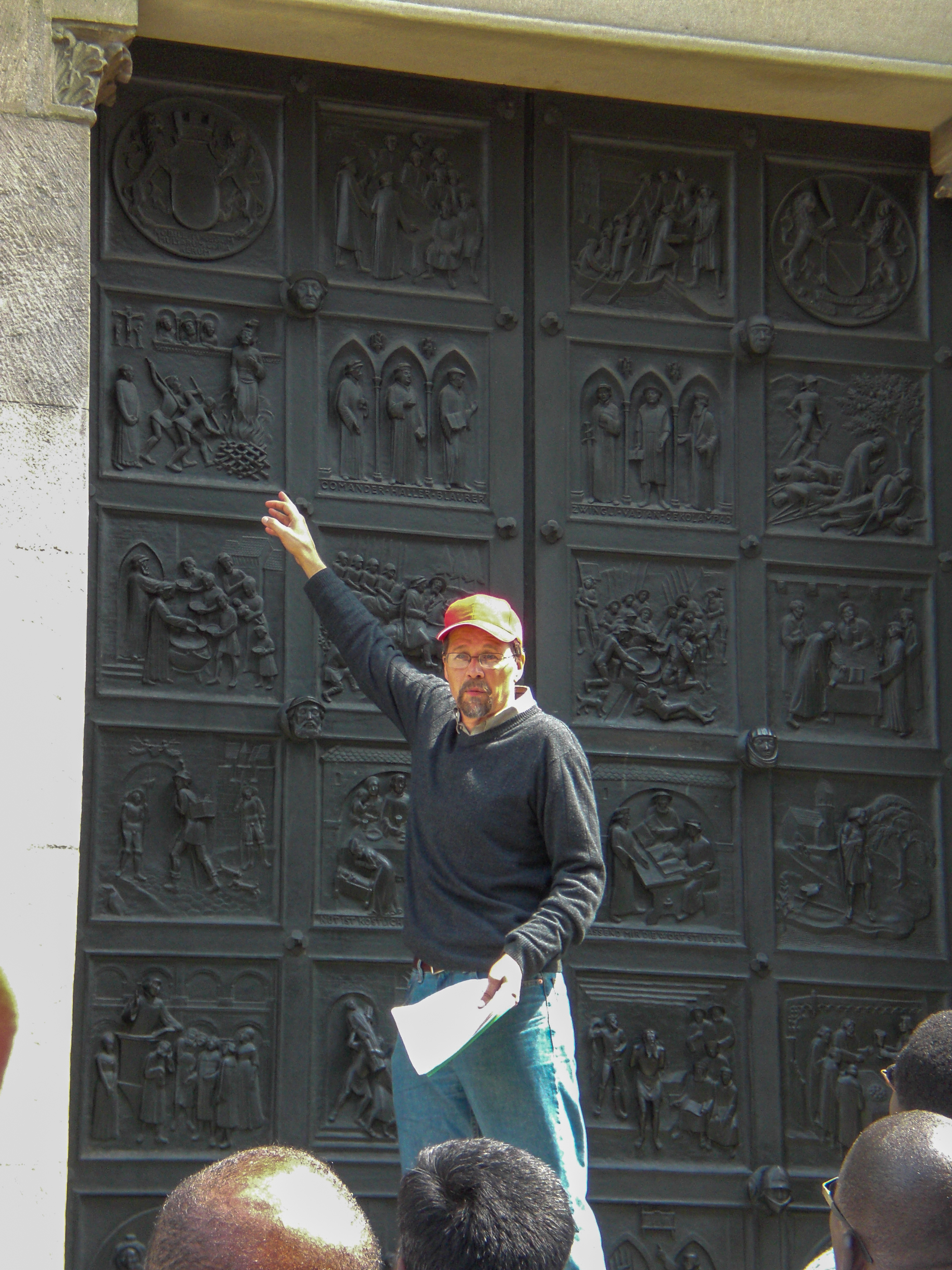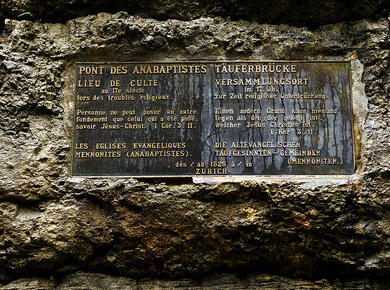Posted: September 8, 2022
*updated on September 2023
Anabaptist historical context
Anabaptist World Fellowship Sunday is an annual event for MWC member congregations around the world, worshipping together in spirit using the same worship resources, knowing that we belong to each other in this global family of faith.
Anabaptism is a Christian movement that traces its origins to the Radical Reformation. The most widely accepted date for the establishment of Anabaptism is 21 January 1525, when Conrad Grebel baptized George Blaurock in Felix Manz’s house in Zurich, Switzerland. George Blaurock immediately baptized several others on confession of their faith. These baptisms were the first “re-baptisms” known in the movement.
Anabaptism developed into several groups in Europe during the 1500s – including the Mennonites (named after Menno Simons from the Netherlands) – and spread in multiple locations. Members of this movement continued to move and grow in numbers around the world in the centuries to follow.
Mennonite World Conference began in 1925 as a way of bringing together the many churches from different streams of Anabaptism. Today MWC has member churches in 58 countries, each with their own story of how they began and came to be part of our Anabaptist communion.
The Anabaptist movement began as part of a renewal movement within the Catholic Church in Europe in the early 16th century. Some of its inspiration comes from the Catholic tradition: the strong sense of discipline and community found in monasticism, for example, the attentiveness to the Holy Spirit that could be found in Catholic mysticism, or the emphasis on following Jesus in daily life in The Imitation of Christ, by Thomas á Kempis. Anabaptism also owes a debt to Martin Luther and the early Reformation movement, particularly Luther’s emphasis on the authority of Scripture and his emphasis on the freedom of the Christian conscience. And the movement was shaped by deep social and economic unrest of their time that exploded in the Peasants’ War of 1524-1525. The Anabaptists themselves, however, would have said that they were simply trying to be faithful followers of the teachings of Jesus and the example of the Early Church.

Although dates can be somewhat arbitrary, the Anabaptist movement “officially” began on 21 January 1525 when a small group of Christian reformers gathered for a secret worship service in Zurich, Switzerland. The group was frustrated by the hesitance of their leader, Ulrich Zwingli, to enact the changes to Catholic rituals that they agreed Scripture demanded, especially regarding the Mass and the practice of infant baptism. In their reading of Scripture, true Christian baptism assumed a conscious commitment to follow Jesus – something no infant could do. So on 21 January 1525, this small group agreed to baptize each other as adults. Although it would be some time before the full meaning of baptism came into focus, the early Anabaptists understood this act to symbolize the presence of the Holy Spirit in the gift of God’s grace, a commitment to a life of daily discipleship, and membership in a new community of God’s people.
Members of the movement generally referred to themselves as “Brethren” (Brüder)—or later by the more descriptive term “Baptismminded” (Taufgesinnten). Their opponents labeled them Anabaptists (= re-baptizers), in part because “rebaptism” was a criminal offense in the Holy Roman Empire, punishable by death. At first, the group resisted the term “Anabaptist” since in their minds they were not rebaptizing, but rather baptizing correctly for the first time. But over time, the name persisted. Today, Anabaptist is an accepted English term for all Reformation groups who practiced believers (rather than infant) baptism, and the denominations descended from them such as the Amish, Mennonites, and Hutterites.
Over time, however, a coherent movement emerged. Its identity was forged, in part at least, from the need to respond to several basic challenges. First, in response to accusations of heresy by religious and political authorities in the first half of the 16th century, Anabaptists were quick to define themselves as faithful, Biblebelieving Christians. Second, militant voices within their number who were ready to impose social and religious change with violence forced Anabaptists to clarify their identity as peaceful, law-abiding, nonresistant Christians whose only weapon was love. And finally, in the face of spiritualist dissenters who favored an internal religious experience that could avoid theological disputations and go undetected by authorities, Anabaptists were compelled to defend the public and visible nature of the church.
Despite the diversity of theology and practice evident in the first generation of Anabaptists, three coherent groups had emerged by the 1540s: the Swiss Brethren in the Germanspeaking territories; the Hutterites in Moravia; and the Mennonites of the Netherlands and North Germany who were organized around the leadership of Menno Simons. Although these groups differed in important ways, they nonetheless recognized each other as members of the same religious tradition, so that their internal disagreements often took the form of a family quarrel.
Over the next 500 years Anabaptism spread to many different countries around the world, each with their own origin story. Mennonite World Conference began in 1925 to bring different Anabaptist groups together for fellowship, worship, witness and service.
—Excerpts from Stories: How Mennonites Came to Be, by John D. Roth, Herald Press, 2006. Adapted and used with permission.



Join the Conversation on Social Media
FacebookTwitterInstagramFlickrYouTube